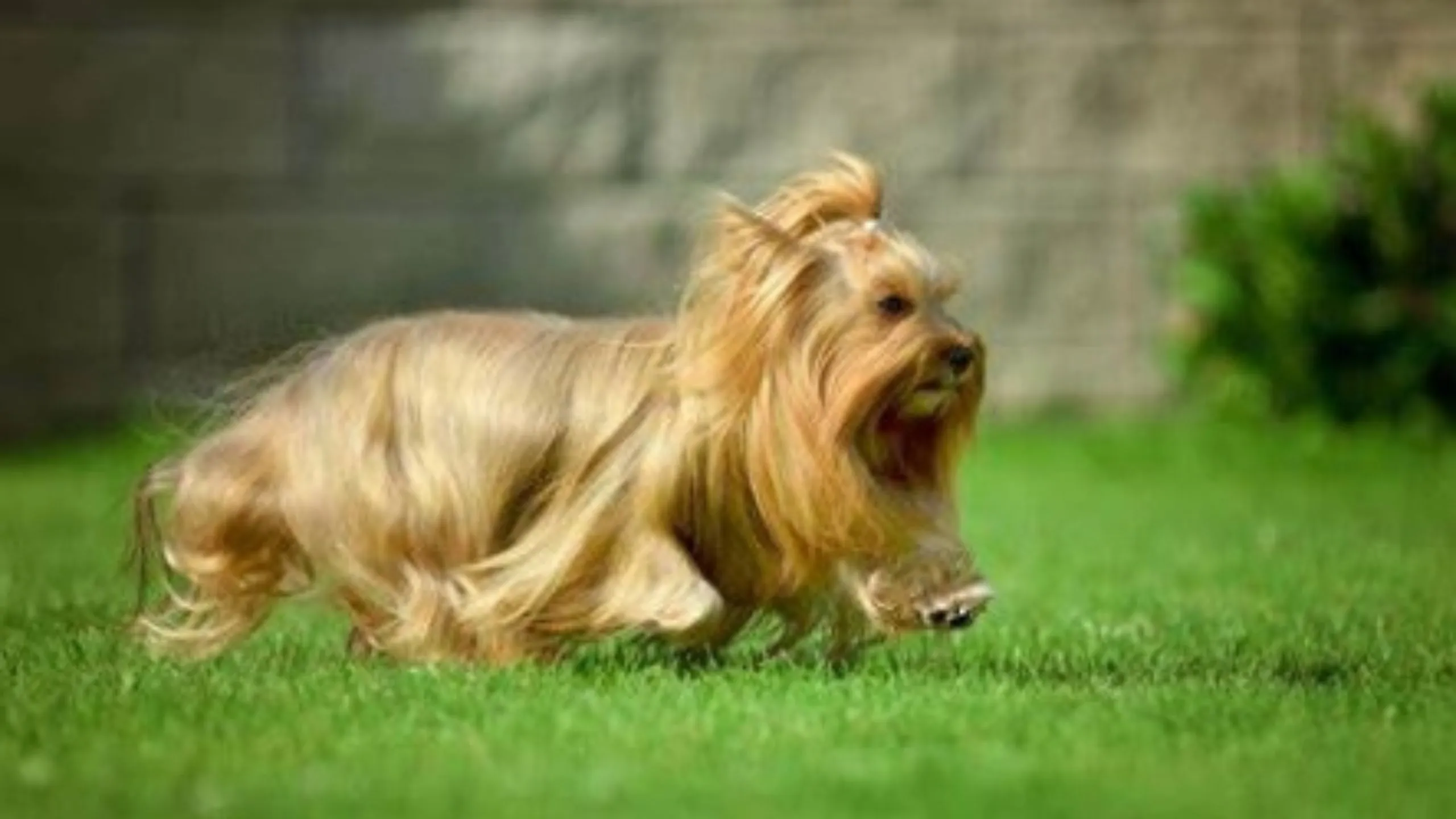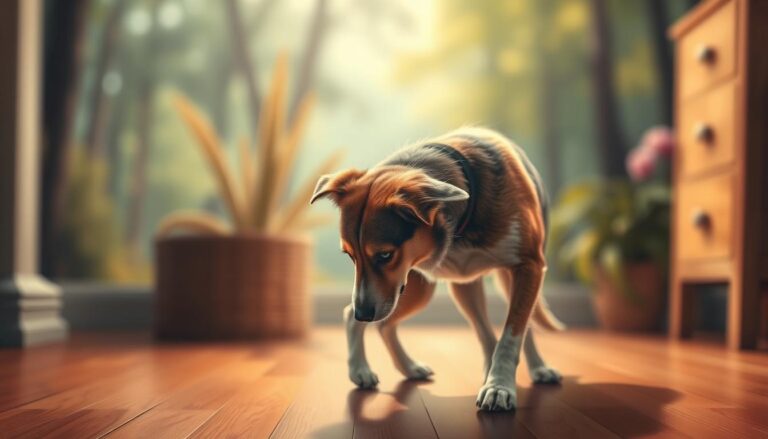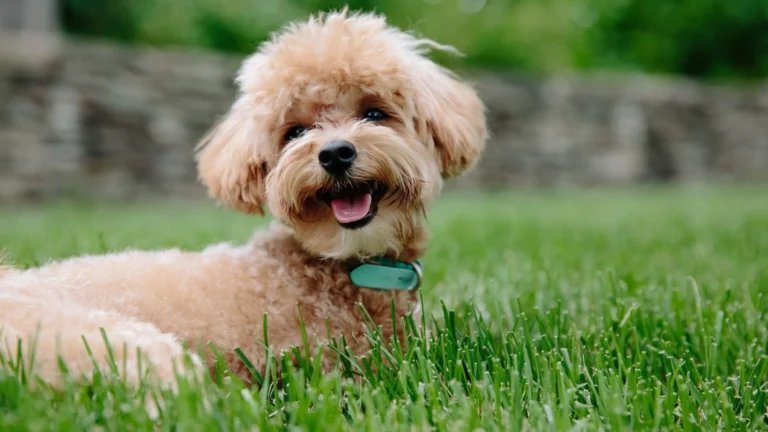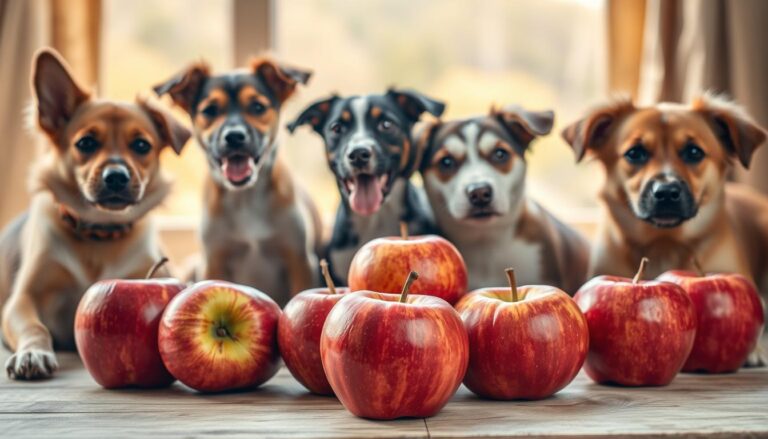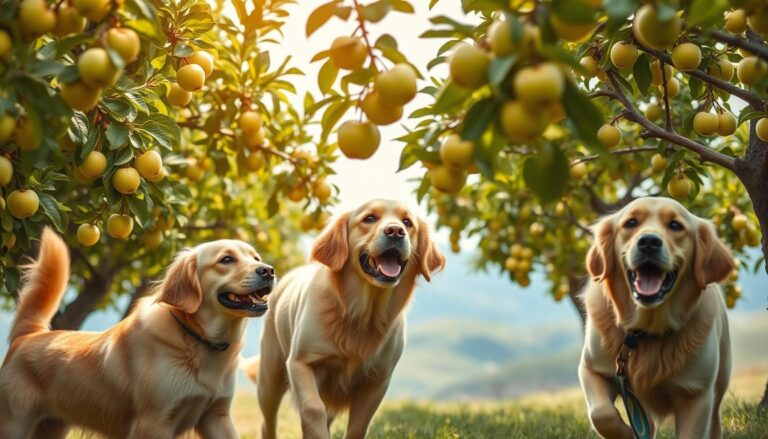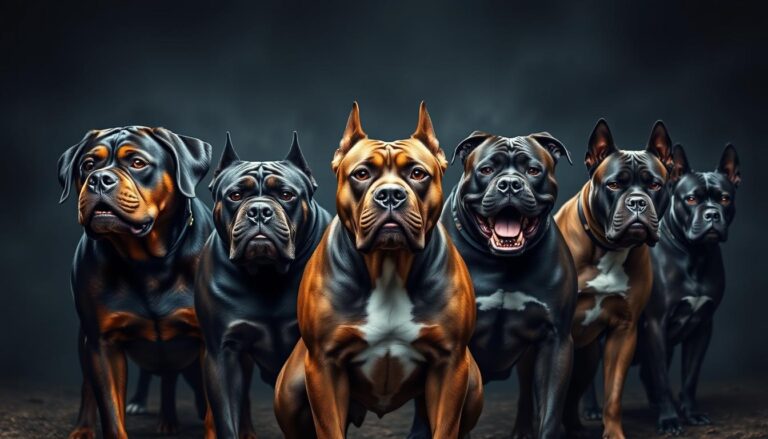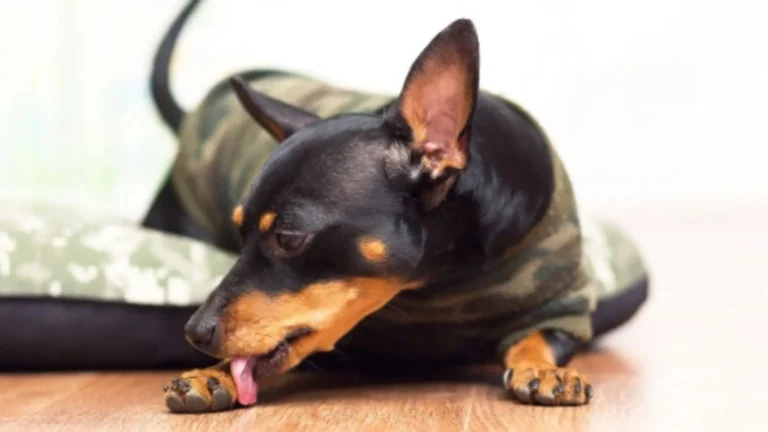Long Hair Dog Grooming Tips for a Healthy Coat
Every dog owner knows the joy of running fingers through their dog’s silky coat. It feels soft and warm, creating a deep bond. Grooming is more than just making your dog look good. It’s a way to show love and care.
Grooming tips are key to your dog’s health and happiness. They help prevent skin problems, parasites, and health issues. Brushing your dog regularly spreads natural oils, stops matting, and spots health problems early.
Long-haired dogs need special care for their beautiful coats. Each brushstroke is a chance to check your dog’s health and bond with them. Regular grooming keeps your dog looking and feeling their best.
In this guide, we’ll share grooming tips for long-haired breeds. You’ll learn to be a caring and skilled groomer for your dog’s coat.
Table of Contents
Understanding Double-Coated and Long-Haired Breeds
Dog owners often wonder about their pets’ unique features, especially their coats. Double coated breeds have a special fur structure. This sets them apart from other dog breeds with long hair.
These remarkable canines have a distinctive two-layer coat. This coat provides exceptional protection and comfort.
The unique coat structure of double coated breeds consists of two primary layers:
- Soft undercoat: A dense, woolly layer close to the skin
- Harsh topcoat: A protective outer layer of longer guard hairs
Types of Double Coats
Not all double coated breeds are the same. Some have more pronounced double coat characteristics than others. The coat density and texture can vary a lot between different breeds.
- Dense winter coats
- Moderate seasonal coats
- Light protective coats
Natural Protection Functions
The double coat serves critical protective functions for dogs. This fur system helps regulate body temperature. It protects dogs from both extreme cold and heat.
The undercoat provides insulation. The topcoat repels water and shields against UV radiation.
Common Long-Haired Breeds
Several popular dog breeds have impressive double coat characteristics:
- Golden Retrievers
- Siberian Huskies
- German Shepherds
- Alaskan Malamutes
- Collies
Understanding your dog’s coat type is crucial for proper grooming and care. Each double coated breed needs specific maintenance. This keeps their unique fur healthy and functional.
Essential Grooming Tools for Long Hair Dogs
Keeping your furry friends looking great needs the right grooming tools. Large breed dogs with long hair need special tools to keep their coat healthy and tangle-free. Knowing which tools are best makes grooming easy and keeps your dog happy.
Choosing the right brushes is key for long-haired dogs. Different coats need specific tools to avoid matting and keep the coat healthy. Here are the must-have grooming tools for every dog owner:
- Undercoat Rake: Great for removing loose fur and stopping too much shedding in thick-coated breeds
- Slicker Brush: Ideal for detangling and removing small knots in long-haired dogs
- Pin Brush: Gentle tool for daily care of long, silky coats
- De-matting Comb: Special tool for breaking up tough tangles without hurting your dog
- Bristle Brush: Excellent for spreading natural oils and adding shine to your dog’s coat
Investing in top-notch grooming tools greatly improves your large breed dog’s coat health. Look for brushes with comfy handles and soft bristles that won’t irritate your dog’s skin. Professional groomers suggest having several tools for different grooming needs all year.
Pro Tip: Always brush your dog’s coat before bathing to remove tangles and make the cleaning process more effective.
Regular grooming not only keeps your furry friends looking stunning but also lets you check for skin issues or abnormalities. Spend time learning how to brush properly and make grooming a fun bonding time with your dog.
Proper Brushing Techniques and Frequency
Keeping a long-haired dog’s coat healthy needs regular and careful grooming. Shedding management starts with the right brushing techniques. These keep your dog’s coat smooth and free of tangles. Different coat types need special care to keep them looking great.
Daily Maintenance Routine
Your daily brushing routine is key to stop matting and cut down on shedding. Short, regular sessions are best for most dogs. Here’s a simple way to do it:
- Choose the right brush for your dog’s coat type
- Brush for 5-10 minutes daily
- Start at the skin and work outward
- Use gentle, consistent strokes
Dealing with Tangles and Mats
Tangles can turn into painful mats that need a pro to fix. Here’s how to handle them early:
- Use a detangling spray before brushing
- Work on small sections at a time
- Hold the base of the fur when removing knots
- Never pull or yank
Direction and Pressure Control
Proper brushing technique is important for your dog’s skin and coat. Follow these tips:
| Brushing Element | Best Practice |
|---|---|
| Brush Direction | Always brush in the direction of hair growth |
| Pressure | Use light to moderate pressure |
| Sensitive Areas | Be extra gentle around ears, belly, and joints |
Remember, patience and consistency are crucial for dog grooming. With practice, you’ll get a routine that keeps your long-haired dog’s coat healthy and beautiful.
Bathing Best Practices for Long-Haired Dogs
Keeping your long-haired dog clean is important. Hypoallergenic dogs need special care to keep their coat healthy. Regular baths and professional haircuts are key.
Before you start, get all your supplies ready. Make sure everything is within reach to keep your dog calm.
- Use lukewarm water to prevent skin irritation
- Select a dog-specific, hypoallergenic shampoo
- Brush the coat thoroughly before bathing
- Protect ears with cotton balls to prevent water entry
Bathing long-haired dogs needs patience and care. Start by wetting the coat gently, avoiding the face. Use gentle, circular motions with hypoallergenic shampoo.
| Bathing Frequency | Coat Type | Recommended Interval |
|---|---|---|
| Short-haired breeds | Smooth coat | Every 4-6 weeks |
| Long-haired breeds | Dense undercoat | Every 6-8 weeks |
| Hypoallergenic breeds | Minimal shedding | Every 4-8 weeks |
Rinse well to avoid skin irritation. Make sure to remove all soap from the coat. Gently pat dry with a towel, avoiding tangles.
Professional groomers suggest using a blow dryer on low heat. Keep it moving to avoid burns. Brush while drying to prevent matting.
Seasonal Grooming Requirements
Your furry friends need different grooming in each season. Knowing about coat changes helps keep them healthy and comfy all year.
Managing shedding is key as dogs’ coats change a lot with the seasons. Each season brings its own grooming challenges for your dog’s coat health and look.
Winter Coat Care
In winter, long-haired dogs grow thicker coats for protection. Your grooming should focus on:
- Preventing snow and ice buildup in fur
- Regular brushing to remove trapped moisture
- Checking for skin dryness and irritation
Summer Shedding Management
Summer is when many dogs shed a lot. Good strategies include:
- Daily brushing to remove loose undercoat
- Using deshedding tools made for long-haired breeds
- Keeping cool places to cut down on shedding
Spring and Fall Transitions
Seasonal changes need extra grooming care. Here’s what to do:
| Season | Grooming Focus | Key Actions |
|---|---|---|
| Spring | Heavy Shedding | Frequent brushing, possible professional grooming |
| Fall | Coat Thickening | Gradual brushing intensity, nutrition adjustment |
Pro tip: Regular grooming helps manage coat changes and keeps your dog comfy all year.
Professional vs Home Grooming Considerations
Deciding between professional and home grooming for your long-haired dog is important. Your dog’s coat type and grooming needs are key. Professional groomers can help keep your dog’s coat looking great with their expertise.
When choosing between professional and home grooming, think about these things:
- Coat complexity and breed-specific requirements
- Your personal time and skill level
- Budget constraints
- Your dog’s temperament during grooming
Professional grooming is a must for dogs with complex coats or special needs. Experts say to groom double-coated breeds every 8 to 12 weeks. This prevents matting and keeps their coat healthy.
If you groom at home, get good tools and make a comfy space. Learn how to brush right and stick to a routine. Patience and gentle handling are key to successful home grooming.
When picking a professional groomer, check their experience with your breed. Look for certified groomers who know how to handle different coats. Ask about their dog-handling skills and get references from other pet owners.
| Professional Grooming | Home Grooming |
|---|---|
| Comprehensive coat assessment | Cost-effective |
| Specialized equipment | Builds bond with pet |
| Health check during session | Flexible scheduling |
The best grooming method depends on your dog’s needs, your comfort, and what you can afford. Regularly check if your grooming plan is working for your long-haired dog.
Natural Coat Health and Nutrition Impact
Nutrition is key for a healthy coat in both hypoallergenic and large breed dogs. What your dog eats affects their fur’s shine, strength, and health. Knowing the right nutrients helps support your dog’s coat from the inside.
A balanced diet is the base for a shiny coat. Important nutrients for fur health include:
- High-quality protein for hair growth
- Omega-3 and omega-6 fatty acids
- Essential vitamins and minerals
Essential Nutrients for Coat Health
Protein is vital for hair, important for all dogs. Animal-based proteins offer the best amino acids for coat care. Omega-3s reduce inflammation and make the coat shiny and smooth.
Supplements for Shine and Strength
Here are supplements to boost your dog’s coat health:
- Fish oil for omega-3 fatty acids
- Biotin for hair strength
- Zinc for coat texture
Always talk to your vet before adding supplements. They can suggest the best options for your dog’s breed, age, and health.
Preventing and Addressing Common Long Hair Dog Problems
Dog breeds with long hair need extra care to keep their coat healthy. Shedding management is key to keep them comfortable and free from infections.
Long-haired dogs face several common issues. Spotting and fixing these problems early can prevent discomfort and health issues.
- Matting: Dense fur can quickly develop painful knots that pull on the skin
- Hot spots: Moisture-trapped areas that become inflamed and irritated
- Skin infections: Parasites and bacteria can hide in thick coat layers
- Excessive shedding: Can indicate underlying nutritional or health issues
Preventing problems is crucial for long-haired dogs. Regular grooming helps catch early signs of issues. Brush your dog’s coat 3-4 times a week to avoid tangles and spread skin oils.
Look out for these warning signs of serious conditions:
- Persistent scratching
- Unusual odors
- Visible skin irritations
- Changes in coat texture
If shedding gets hard to manage, talk to your vet. They can help create a grooming plan that keeps your dog healthy and happy.
Special Care for Sensitive Areas
Grooming your furry friends needs extra care for their delicate spots. Long-haired dogs need special attention to stay healthy and comfortable. Knowing how to groom these areas right can stop infections and keep your dog happy.
Looking after sensitive areas is more than just basic grooming. These spots need gentle care and special techniques. This ensures your dog stays clean and safe.
Ear and Face Grooming
Ear care is key for long-haired dogs. Hair and moisture can trap bacteria, causing infections. Here’s what to do:
- Gently clean ears weekly with a vet-approved solution
- Look for redness, odd smells, or too much wax
- Use soft, lint-free cloths for cleaning
- Trim hair around ear openings to help air flow
For the face, aim to stop tear stains and keep it clean. Soft, damp cloths are best for wiping around eyes and mouth.
Paw and Tail Maintenance
Paw care is vital, especially for dogs with long hair between their pads. Winter can be tough.
| Paw Care Technique | Purpose | Frequency |
|---|---|---|
| Trim hair between paw pads | Prevent ice/snow buildup | Every 4-6 weeks |
| Check for cuts or wounds | Prevent infections | Weekly |
| Use protective balm | Protect against salt and cold | Winter months |
Tail grooming means regular brushing to avoid mats and check for skin issues. Use a soft-bristled brush and be gentle around this sensitive spot.
Advanced Grooming Techniques for Show Dogs
Professional dog haircuts for show dogs need precision and special skills. Large breed dogs often need more detailed grooming than regular pets. Learning about show dog grooming can make your pet look and feel better.
Professional groomers use advanced techniques to get dogs ready for shows:
- Precise scissoring and shaping of coat contours
- Strategic trimming to highlight breed-specific characteristics
- Creating uniform coat textures and volumes
- Mastering breed-standard grooming profiles
Dog haircuts for shows use special tools and methods. You’ll need:
- High-precision scissors
- Professional electric clippers
- Thinning shears for blending
- Specialized brushes for different coat types
Large breed dogs need extra care during grooming. Proper technique involves understanding each breed’s unique coat structure and standard requirements. Groomers spend years honing their skills to make a dog’s coat stand out.
Success in show dog grooming comes from technical skill, breed knowledge, and artistic vision. Whether for a competition or to keep your dog looking great, these advanced techniques can help you achieve top results.
Conclusion
Caring for a long hair dog needs dedication and understanding. This article offers tips for keeping your pet’s coat healthy. Regular grooming is key for your dog’s health and happiness.
Creating a grooming routine that fits your dog’s breed can make grooming a special time. Each grooming session lets you check for skin problems and bond with your dog. By grooming right, your long-haired dog will look and feel great.
Every dog is different, and grooming needs vary. By following the tips here, you can manage your dog’s coat well. Spend time learning the right techniques, choosing the right tools, and understanding your dog’s grooming needs.
Your dog’s coat shows its health. Good nutrition, regular care, and attention will keep your dog’s coat shiny and healthy. Start grooming today and see your dog flourish.

